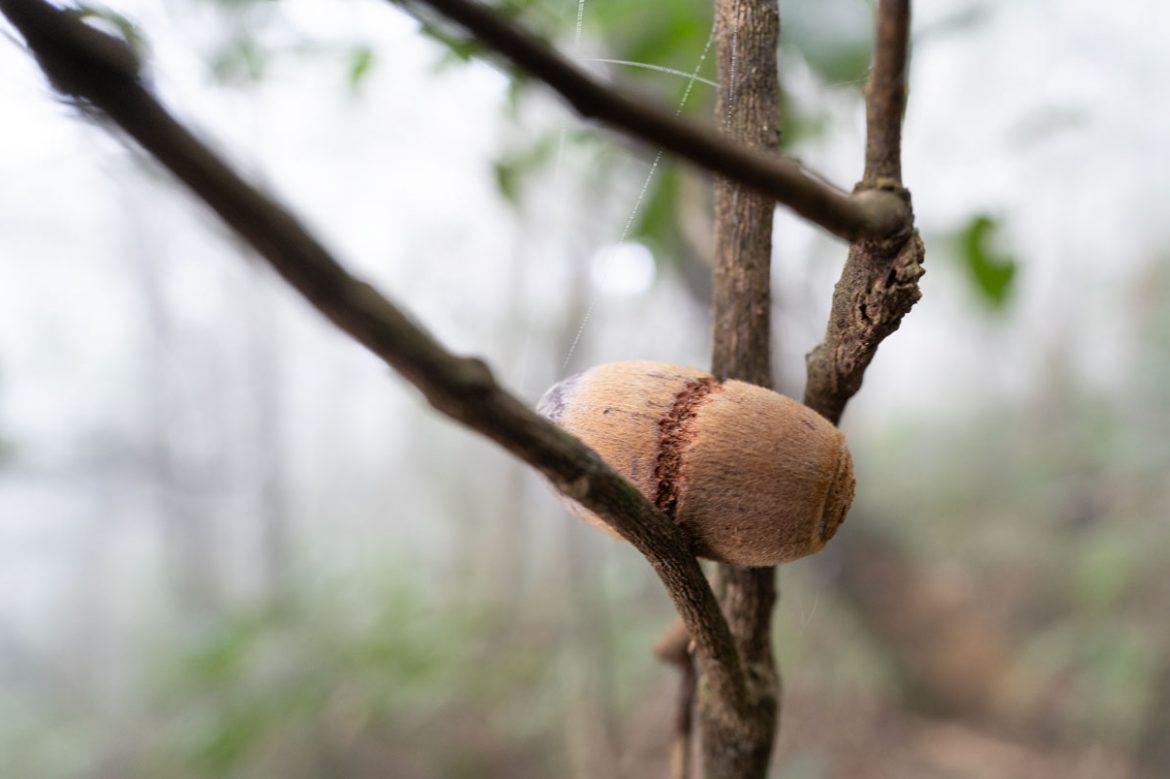
Carpentry Skills of Squirrels
When scientists studying the rainforests of southern China found acorns (Quercus glauca) nicely tucked between the branches of some trees, they could not make much sense of it. The nuts had spiral notches along their mid-lines to fit tightly between two tree branches and were carefully placed between thin branches connected at an angle of 25-40 degrees, about two metres above the ground, and roughly 10-25 metres from the nearest acorn producing tree.
Scientists found the answer in infrared photo traps: two different species of flying squirrels (Hylopetes phayreielectilis and Hylopetes alboniger) that are active only at night. The animals were using their teeth to make notches on the nuts and were carefully (and tightly) tucking them between tree branches of their own choosing to consume them later. They were even re-visiting the trees they had already stored nuts in, to perfect their carpentry.
Squirrels living in temperate climates famously hide nuts in crevices and cracks on trees or hollows in the ground to consume them later. This way, they also benefit the forest ecosystem by helping forgotten or overlooked nuts spread and sprout. If you hide a nut in the ground in a tropical climate, it will rapidly start to rot and decompose. Therefore, the tropical cousins of squirrels chose another method to secure their food and acquired some carpentry skills.
“The flying squirrels’ unique style of nut storage,” says Suqin Fang from Sun Yat-Sen University of China, “likely reflects an ecological adaptation to guarantee food access during dry periods in the rainforest when food may become scarce.”
An important question is whether this ability is innate or learned through cognitive processes that require serious planning. The other species of tree squirrels, which are generally active during day hours, are known to use their sense of sight and smell to find the nuts they have hidden. However, whether these nocturnal flying squirrels use the same methods or not is still unknown. Scientists are planning to continue their research to obtain the remaining answers, and they hope to determine whether the squirrels re-visiting the nut-stacked trees are the same individuals or different ones.
REFERENCES
- 1. https://www.science.org/content/article/how-did-nut-get-there
- 2. https://phys.org/news/2023-06-tropical-flying-squirrels-deploy-carpentry.html
- 3. https://elifesciences.org/articles/89823
